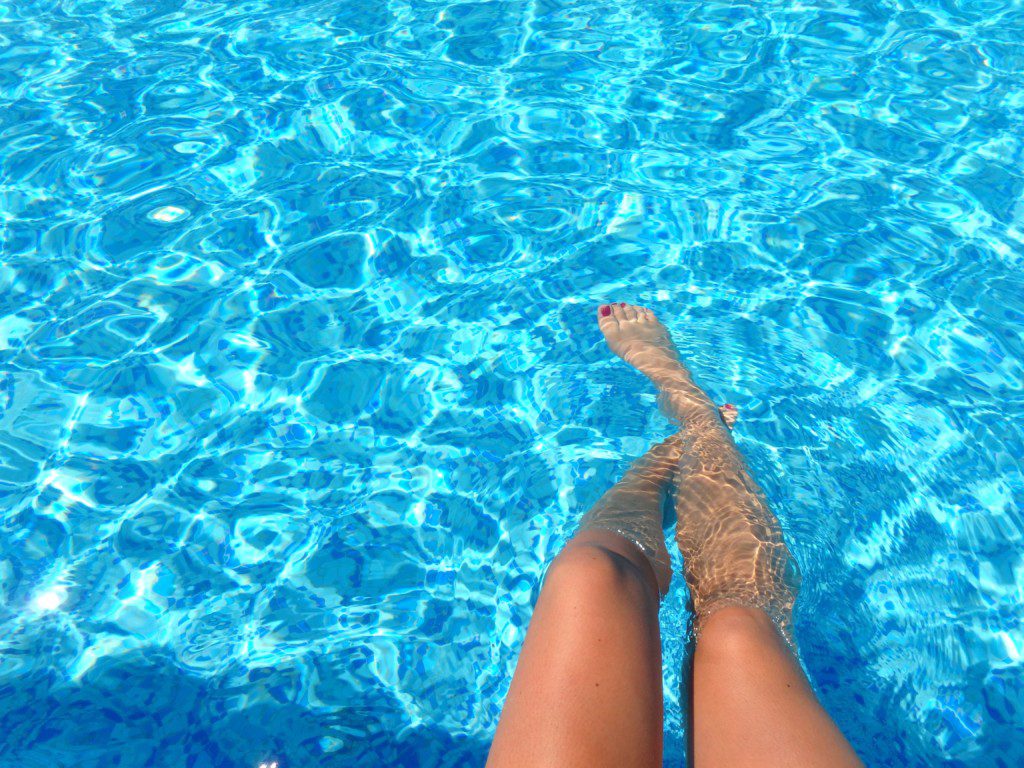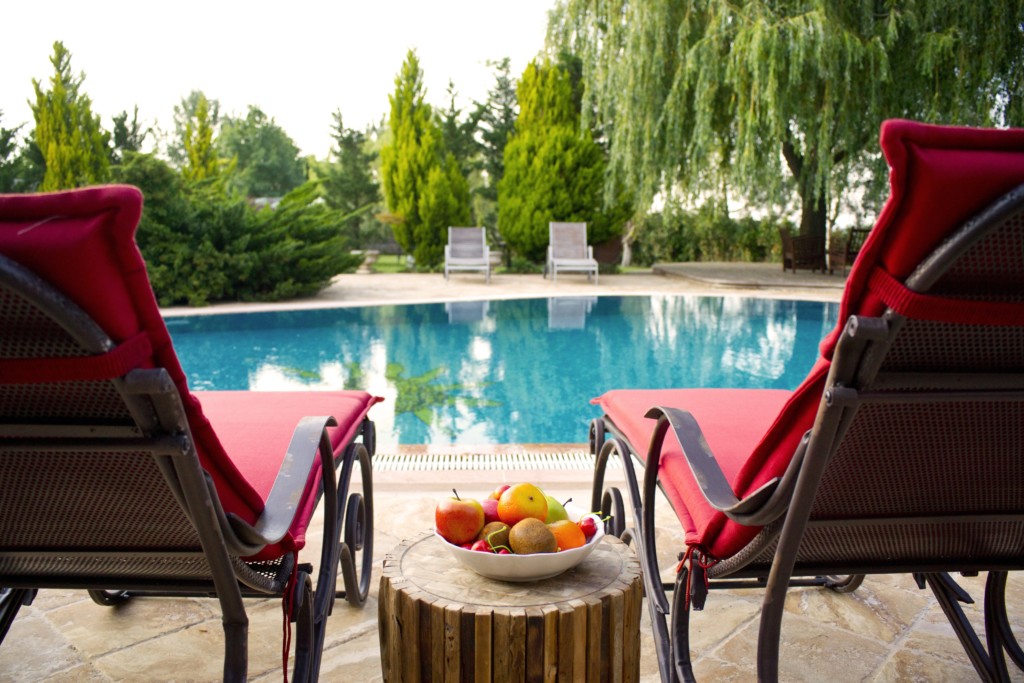09/17/2019 | Swimming Pool & Spa | 9 MINUTE READ
Hydrochloric Acid Use in Home Pools

If you have a swimming pool at your home, it’s important that you take the necessary precautions to maintain the pH levels of the water and the contamination of the pool itself. When the pH levels of the water in your home pool are at an improper level, swimming in the pool may cause a significant amount of discomfort due to potential contaminants.
If you want to properly maintain your pool’s pH levels, you might think about obtaining a pH sensor, of which there are many different types. These sensors will help you identify when the pH levels have reached a point that’s lower or higher than the neutral pH level, which indicates that you must take the necessary steps to treat the water.
Maintaining Proper Water Chemistry
Likely the best method for maintaining proper water chemistry is by using hydrochloric acid, a clear and colorless liquid that’s created by combining water with hydrogen chloride. When placed in pool water, hydrochloric acid has proven to be profoundly effective at removing algae from the floors and walls of a pool while also lowering pH levels that have become harmful to your health.
If you want to make sure that your family members and guests are safe when they swim in your pool, you need to maintain the water chemistry of the pool on a consistent basis. However, this hydrochloric acid is very potent and can be dangerous to handle if you are unaware of proper usage, which is why it’s essential that you learn how to properly handle it.
What Is Hydrochloric Acid?
Hydrochloric acid is a very common substance that’s also known as muriatic acid. When you mix water with hydrogen chloride, the end result is hydrochloric acid, which is a corrosive substance that has many different applications to it. While this substance is perfect for the maintenance of home pools, it also has many industrial uses that you should be aware of. For instance, this acid is commonly used within industrial settings for such purposes as hydro-metallurgical processing, the synthesis of chlorine dioxide, hydrogen production, various cleaning and etching operations, and the cleaning of finished brick work.
Due to how incredibly corrosive this acid is, it has proven to be highly effective at keeping home pools clean and properly maintained. When you place hydrochloric acid into the pool water, it can help to remove any stubborn algae from the floors and walls of your pool, which often allows you to effectively filter the algae out of your pool for good!
Placing this acid in your pool water should also allow you to reduce the pH level, which is helpful if ever the pH levels become elevated. When you’re shopping for hydrochloric acid to use in your home pool, you should search for this acid at home improvement stores or pool supply stores. This substance is often located in the gardening or building supply sections of the store. Before you use it in your pool, make sure that you read all of the directions and precautions.
Achieving Optimal pH for Your Pool
Before you start using hydrochloric acid to restore the pH of your pool water to the proper level, you should first know about pool chemistry and how to achieve the optimal pH for your pool. The pH level of pool water refers to how acidic or alkaline the water is. While you likely understand how it can be dangerous for water to become too acidic, it can also be problematic for water to become alkaline.

An excess of alkaline can cause skin irritations and gastrointestinal problems. Too much alkalinity can also cause issues with the normal pH of your body, which might lead to a condition known as metabolic alkalosis. The development of this health condition can bring about such symptoms as vomiting, nausea, confusion, hand tremors, and muscle twitching.
The pH level of your pool water directly affects every other type of chemical balance within the water. When you use a Sensorex pH sensor to test the pH levels of your water, a reading of zero indicates highly acidic water. On the other hand, the highest reading of 14 indicates that there is too much alkaline in the water. The neutral pH reading is seven. For pool water, your readings should generally be between 7.2-7.6. At this pH level, your skin and eyes may be very comfortable when you’re in the water. This pH level also indicates that the chlorine levels of the water are perfect, which ensures that the growth of fungus, bacteria, and algae is kept to a minimum. At the right pH levels, your pool won’t develop scale.
Lowering the Alkalinity of Water
If ever the water in your pool becomes too basic or alkaline, you can use hydrochloric acid to lower the pH levels. If the water in your pool becomes too basic, the chlorine in the water won’t work like it’s supposed to, which can lead to the development of scale, eye irritation if anyone swims in the water, and cloudiness and discoloration in the pool water. While a substance known as sodium bisulfate can lower pH as well, hydrochloric acid provides additional benefits, the most notable of which is the boost of free chlorine concentration within the pool water.
When you add this acidic solution to basic water, you’re effectively lowering the alkalinity of the water while increasing the acidity of the water. If you use the right amount in your pool water, you should be able to reduce the pH levels to the right number. Along with keeping your water clean and your pool free from scale, maintaining the proper chemistry of your pool water often also keep swimmers safe and healthy.

General Instructions and Safety Directions of Hydrochloric Acid
Hydrochloric acid is considered to be highly corrosive, which means that it can be dangerous to use if you don’t handle it properly. First of all, it’s essential that you test the pH levels of your swimming pool on a weekly basis. If you find that these levels have reached a pH level that’s higher than 7.6, it may be time to add this acid to the water. Before you handle this substance, there are a couple of safety precautions that you should take. When you’re using hydrochloric acid, you need to avoid contact of the substance with your eyes and skin.
When this acid comes in contact with the skin, it may create significant burns that often require medical treatment. As for the eyes, hydrochloric acid will do permanent damage and may even cause blindness. It’s also important that you don’t inhale the fumes of hydrochloric acid. Doing so can result in substantial damage being done to the respiratory tract. In order to safely use this substance, you should wear boots, safety goggles, and rubber gloves. Before you place the acid into the pool water, make sure that all swimmers are out of the pool. If you take these precautions, using hydrochloric acid should be a relatively simple and safe process.
Cleaning Your Home Pool
To begin the pool cleaning process, you should start by adding some hydrochloric acid to a plastic bucket of your pool water. Keep in mind that you must always add the acid to the water since it can be dangerous to add water to acid. Once you’ve created the mixture and have properly diluted the acid, you need to let the solution rest for a period of 30 minutes. Before continuing, make sure that you turn on the filters in your pool. As the filter is running, add very small amounts of the solution into the pool water, which you should do around the entire perimeter of your pool.
If you want to effectively clean your pool, make sure that you don’t add a significant amount of the substance to your pool at a single time. Keep the filter running for a period of 2-4 hours before you test the pH levels of the water again. At this point, your water should be at the appropriate pH level of 7.2-7.6. To get the proper readings, you need the acid to disperse properly once it’s in the water, which is a process that works best in the early morning hours.

The most difficult aspect of using hydrochloric acid to clean your home pool is ascertaining how much acid needs to be placed in the pool. If you want your pH readings to be correct and your pool water to remain safe to use, it’s important that you use the right amount of acid. If you test the pH levels with a sensor like the pH1000, you need to write down the readings that you’re provided with. If the pH level is below 7.2, you should never use hydrochloric acid. While low pH levels can be harmful and should be tended to, hydrochloric acid is only able to lower pH levels. If the pH grading is between 7.2-7.6, these numbers are considered to be optimal levels, which means that hydrochloric acid would be unnecessary.
Reading pH levels
If you’re given a reading of 8.0, the amount of hydrochloric acid that you use should be 110ml for 10,000 liters of pool water, 320ml for 30,000 liters of pool water, 540ml for 50,000 liters of water, and 1.1 liters of acid for 100,000 liters of water. If the pH readings of your pool water have reached 8.4 or higher, the amount of acid that you use should be 180ml for 10,000 liters, 540ml for 30,000 liters, 900ml for 50,000 liters, and 1.8 liters for 100,000 liters of water.
As can be seen here, the two things that matter most when you’re calculating how much acid to place in your pool water include the amount of water in your pool and the pH levels of the water. While there are some very high acid amounts that are recommended here, you should never use more than 500ml in a single instance. If the size of your pool is 100,000 liters of water with a pH level of 8.4, you need to use only 500ml of acid while filtering the water. Once the water has been filtered after 2-4 hours, you can begin the process with another 500ml until the entire cleaning has been completed.
Conclusion
When you have own a pool at your home, it’s important that you’re able to maintain the proper chemical balance in the pool water. By effectively monitoring your pool’s pH level with a quality pH sensor, you’ll be able to ensure the health and safety of anyone enjoying your home pool.
For more information about pH or pool monitoring systems, make sure that you view our products or get in touch with one of our team members here at Sensorex!
Posted by Dominic O'Donnell on September 17, 2019
Sensorex is a global leader in the design and manufacture of quality sensors for water quality and process applications. The company offers more than 2000 sensor packages for pH, ORP, conductivity, dissolved oxygen, free chlorine, chlorine dioxide, UV transmittance and other specialty measurements, as well as a full line of sensor accessories and transmitters. Its expert technical support engineers solve analytical sensor challenges with custom designs and off the shelf products.





